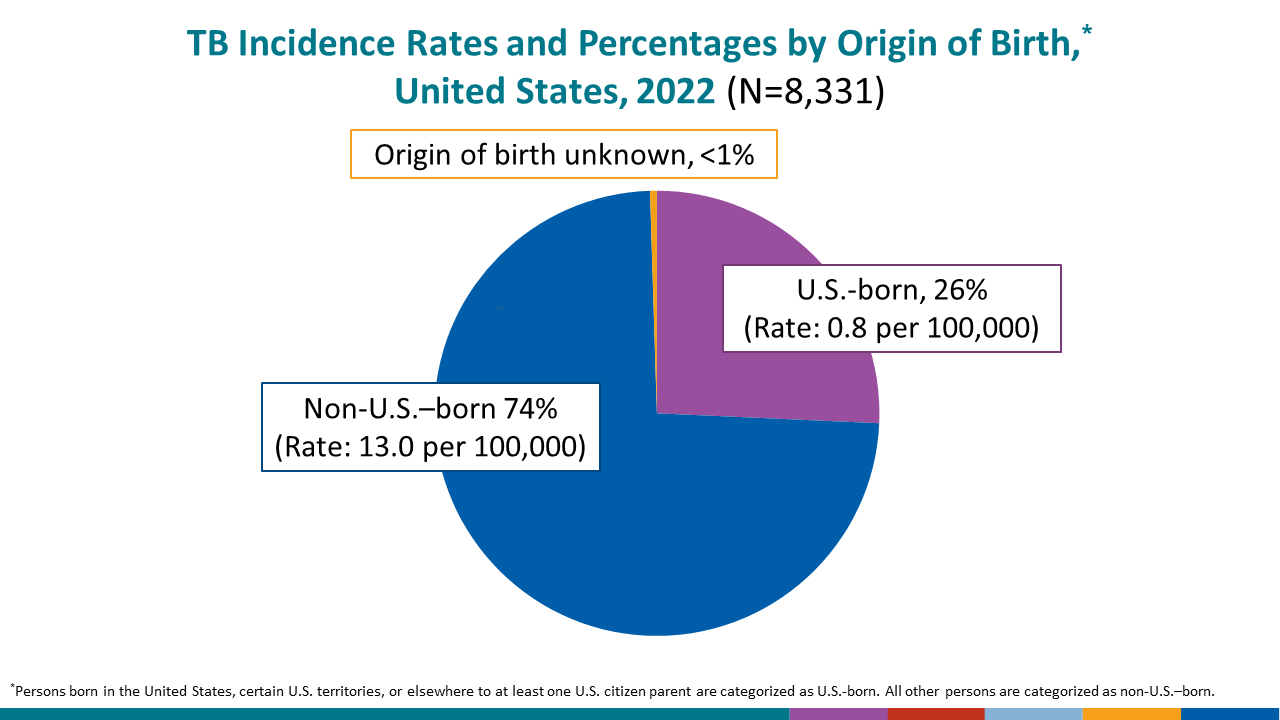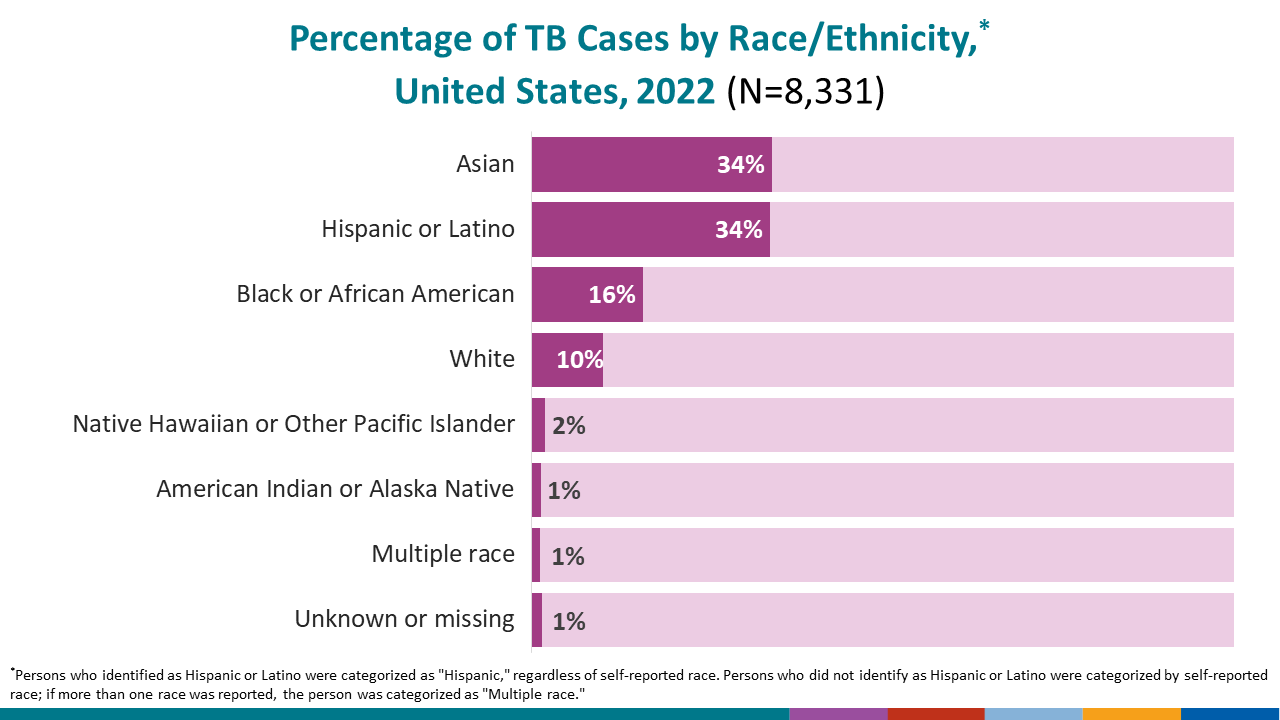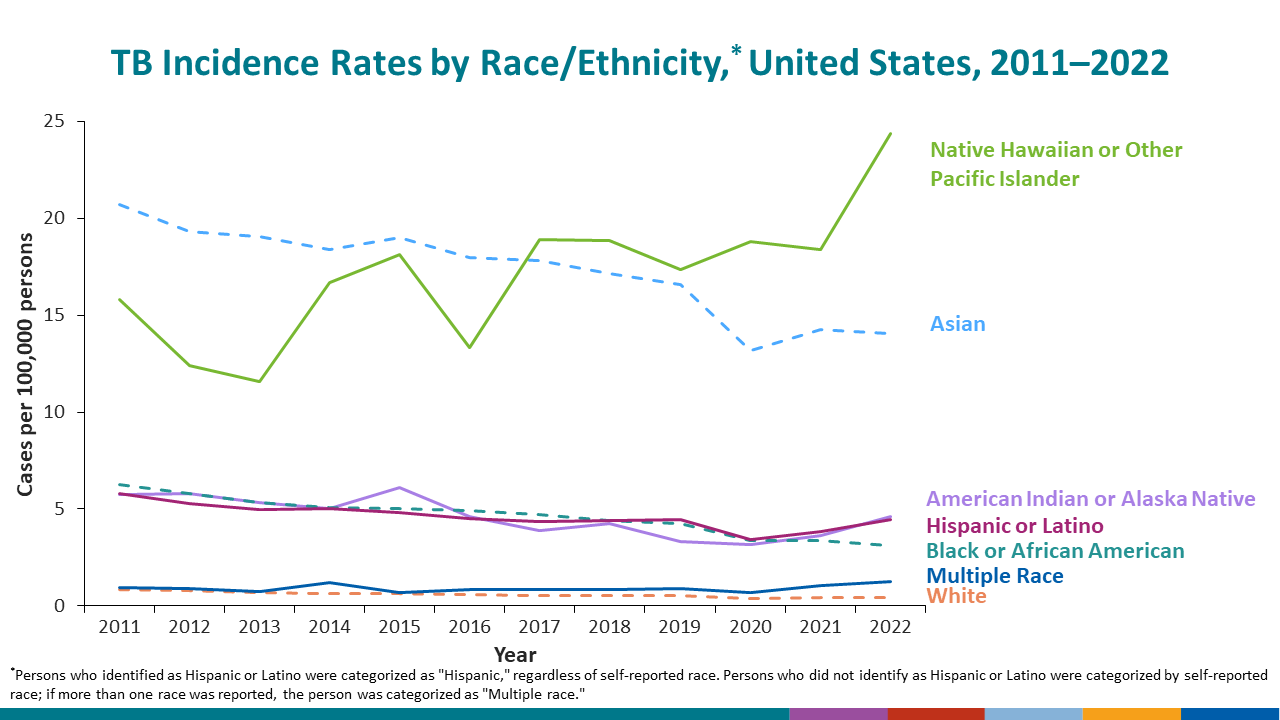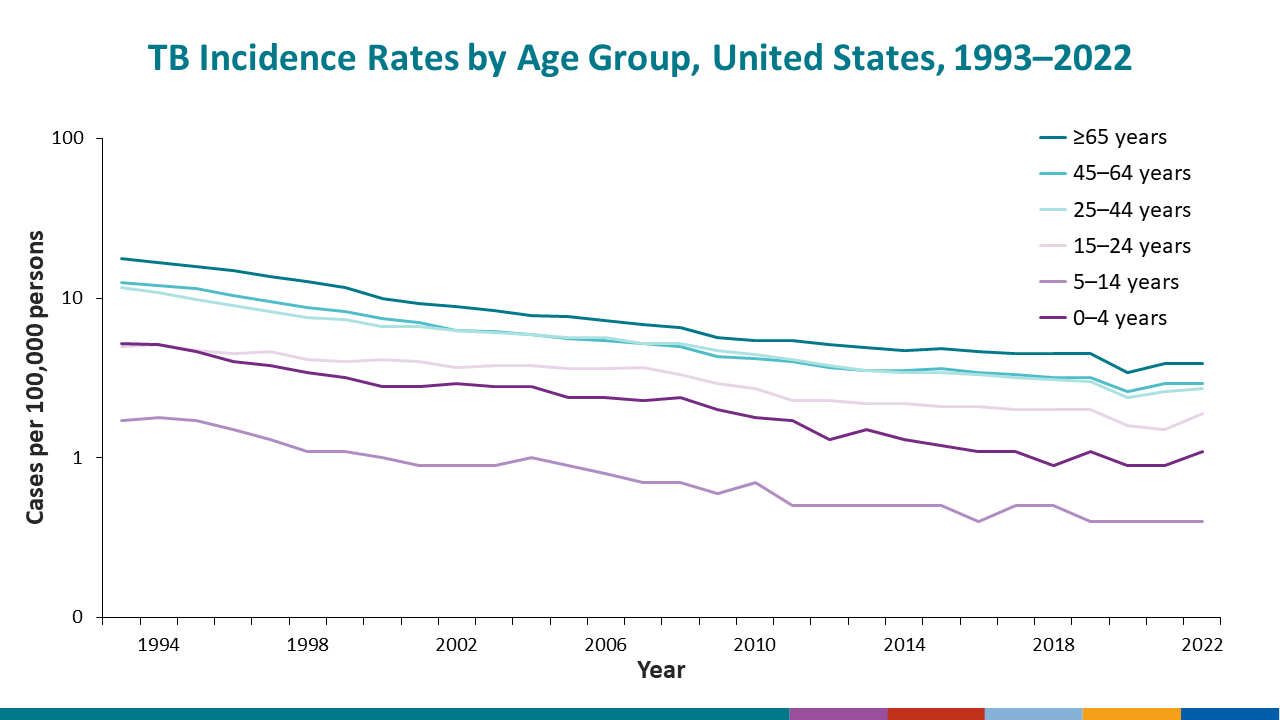Reported Tuberculosis in the United States, 2022
Demographics

Because of the substantially greater risk of exposure to TB outside of the United States, origin of birth is a prominent risk factor for TB in the United States.
Consistent with previous years, in 2022, the majority of reported TB cases occurred among non-U.S.–born persons (73.8%). The number of TB cases diagnosed among non-U.S.–born persons within the first year after arrival in the United States nearly doubled compared with 2021 and reached the highest level since 2016.
During 2022, the incidence rate (cases per 100,000 persons) was 17.1 times higher among non-U.S.–born persons (13.0) than U.S.-born persons (0.8).
Among non-U.S.–born persons with TB disease during 2022, the most common countries of birth included
- Mexico, 18.9%
- Philippines, 10.9%
- India, 8.8%
- Vietnam, 8.2%
- China, 6.0%
These countries have been the most common countries of birth among non-U.S.–born persons with TB since 2018, and they also represent substantial proportions of the non-U.S.–born population living in the United States. Small but noteworthy increases occurred among persons born in several Central and South American countries (e.g., increase of 41.1% among persons born in El Salvador and 98.4% among persons born in Peru) as well as Afghanistan (an increase of 53.8%), which might reflect changes in migration patterns, including increased arrivals to the United States among persons from other parts of the world.
Anyone can get TB disease, but some groups have a higher risk for TB than others.
During 2022, persons with TB disease in the United States most commonly identified as:
- Non-Hispanic Asian persons (34.3%)
- Hispanic or Latino persons (33.9%)
- Non-Hispanic Black or African American persons (15.8%)
- Non-Hispanic White persons (10.2%)
During 2022, TB incidence rates (cases per 100,000 persons) varied by race/ethnicity groups:
- Native Hawaiian or Other Pacific Islander persons, 24.4
- Asian persons, 14.1
- American Indian or Alaska Native persons, 4.6
- Hispanic or Latino persons, 4.4
- Black or African American persons, 3.1
- Persons who identify with more than one race, 1.2
- White persons, 0.4
TB incidence rates were higher among adults than among children. Among persons 5 years and older, the incidence rates increase with age. TB risk increases with age because of a combination of age-related changes in TB exposure, risk of comorbidities, and immune function. During 2022,
- Persons aged 5–14 years had the lowest TB incidence rate (0.4).
- Persons aged 65 years or older had the highest TB incidence rate (3.9).
- Incidence rates were steady or increased during 2022 compared with 2021 for all age groups. However, compared with 2019, TB incidence rates during 2022 remained the same or lower for each age group.
During 2022, male persons accounted for 61.9% of TB cases in the United States, including 62.5% of cases among U.S.-born persons and 61.9% of cases among non-U.S.–born persons.
For both U.S.-born persons and non-U.S.–born persons in 2022, the percentage of cases was higher for male persons compared with female persons at every age group except ages 5–14 years.
Among persons aged 5–14 years, 53.4% of cases among non-U.S.–born persons and 54.3% of cases among U.S.-born persons occurred among female persons.
Learn more in the Executive Commentary.





